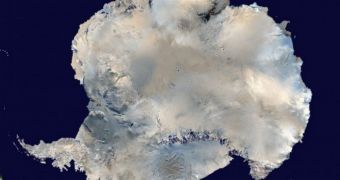Over the past few years, as advanced imaging and research technology became available to research groups around the world, scientists have determined that Antarctica is not actually a block of solid ice. Trapped underneath its surface are very large underground lakes, as well as extensive water sheets, which may be home to countless species of microbes. As biologists well know, a large number of these microorganisms produce methane, which gets trapped under the ice, seeing how the lakes and water sheets are sealed from the rest of the world.
According to scientists, it may be that, over the millions of years since the lakes were covered up, large amounts of methane may have accumulated at those locations. This is far from certain, but some believe that there is a genuine possibility such deposits exist. While there is currently no way to test for certain, if the theory turns out to be true, than we could be in a heap of trouble. As the ices in Antarctica are melting, due to the effects of global warming and climate change, these deposits could be brought closer and closer to the surface, until their pressure finally breaks through the thinning ices above.
If this happens, then vast amounts of the potent greenhouse gas could be released into the planet's atmosphere. According to some investigators, the same may also be true for ice deposits in Greenland. Huge quantities of methane are also trapped in the permafrost on tundras, and also in arctic peatlands, and global warming is forcing these areas to become warmer, and release more and more of the stuff into the air. Recent studies have determined that even methane deposits at the bottom of oceans are currently becoming unstable, due to an increase in overall temperatures.
Details of the new discoveries were presented on March 15, at the American Geophysical Union's conference on Antarctic lakes. Researchers at the University of Bristol in England, led by expert geochemist Jemma Wadham, presented the results of their studies on Antarctic and Greenland glaciers. The group revealed that both locations analyzed revealed traces of the gas in high concentrations, as well as incredibly large numbers of methanogens, as in microbes that produce the gas, Wired reports.

 14 DAY TRIAL //
14 DAY TRIAL //